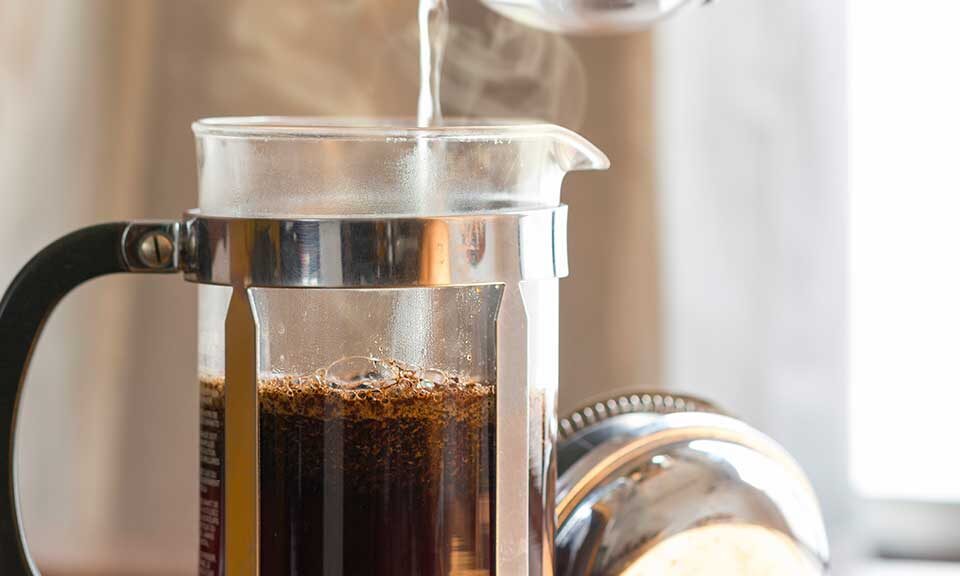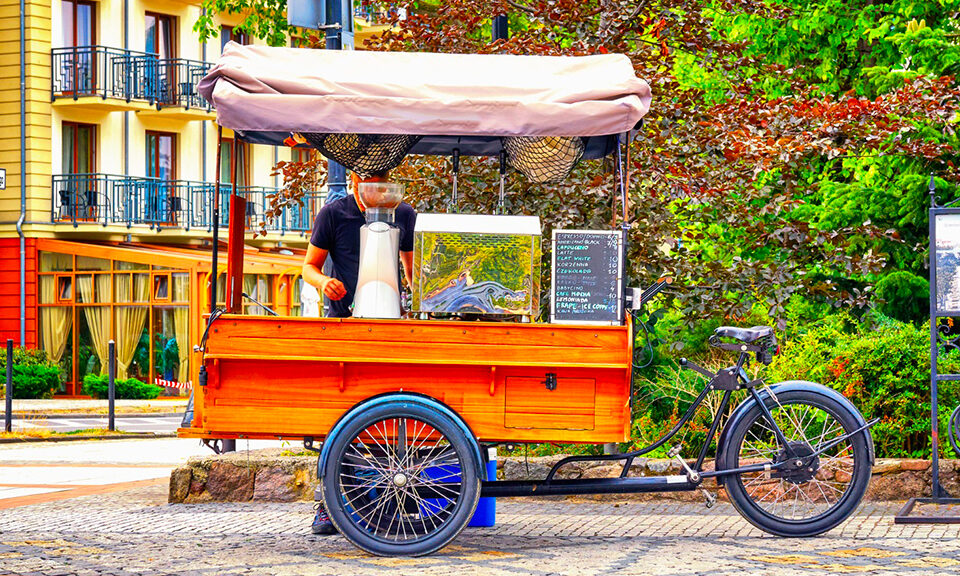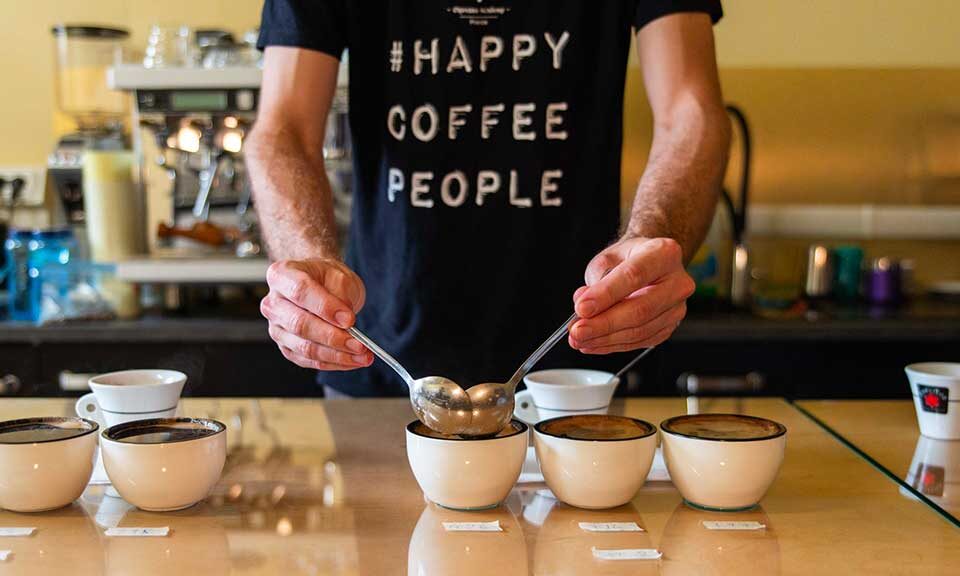
How to make heart in cappuccino
15 May 2024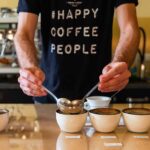
The importance of the triangular test in coffee tasting
10 July 2024How to prepare cold brew at home
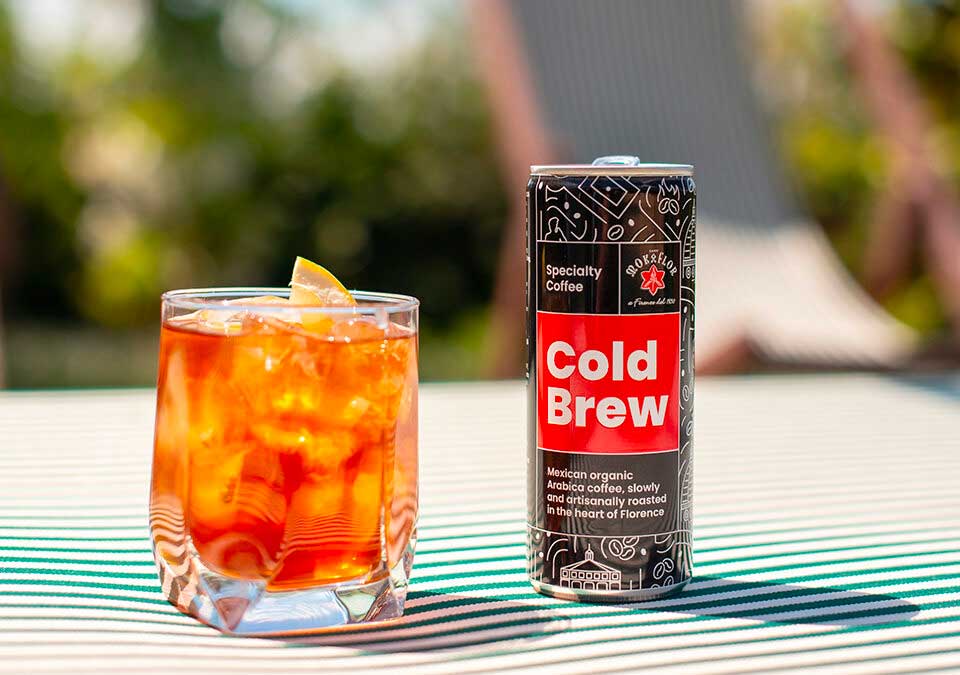
Cold brew coffee, with its velvety and sweet taste, is conquering the world. Do you want to enjoy cold brew lying on your sofa? Let us see which coffees, tools and techniques will allow you to prepare the cold brew coffee at home!
In a recent interview Howard Schultz, the founder of Starbucks, declared that a strategic sector for Starbucks will become that of cold brew, a sector in which it will invest 20 million dollars in the near future. According to Coffee Intelligence, however, the cold brew sector will grow by 22% per year for the next five years.
Cold brew is taking the world by storm, and it may have won you over too when you tried it for the first time a few days ago. Are you now thinking of enjoying cold coffee in the comfort of your own home? Do you want to learn how to prepare cold brew coffee at home, as good as Starbucks or even better? You’ve come to the right place—dive into this “cool” world and discover how!
Explore the various extraction methods.
What is cold brew coffee?
The first thing to do is clarify what cold brew coffee is.
Cold brew is not coffee brewed hot using an espresso machine, or a moka pot, or a batch brewer or other filter methods and then cooled. Instead, it’s coffee that is extracted, from the very beginning, cold, using for the process very cold or even iced water. But how is this possible?
Infusion, whether of coffee or other substances, is a chemical process where water, as a solvent, extracts soluble substances from a given material (such as coffee or tea). The extraction can be more or less intense depending on two parameters: the temperature of the water and the duration of the infusion (or the contact time between water and the material).
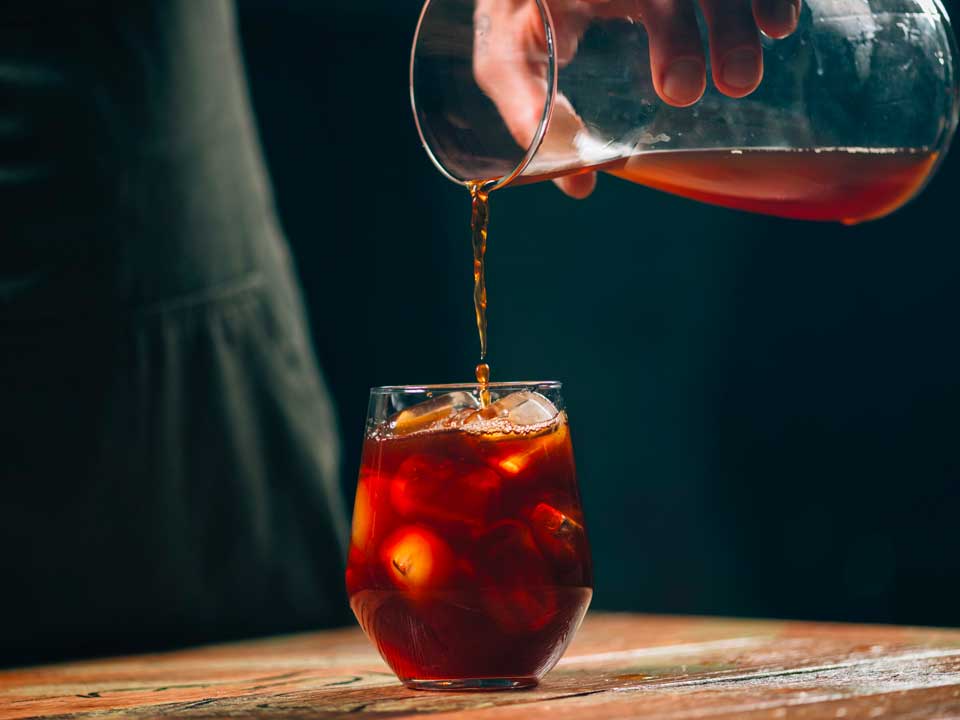
- The higher the water temperature, the shorter the infusion time can be.
- The longer the infusion time, the lower the water temperature can be.
Cold brew falls into the second category. With extremely low water temperatures, it requires an extremely long infusion time: 8, 10, or even 12 hours.
The result is a velvety, aromatic coffee with a high natural sweetness and a pleasant acidity. Of course, all this depends on using excellent quality coffee.
Can cold brew be made at home?
If you are among the lucky ones who have begun exploring the world of coffee brewing, you already know that these preparations (which include all coffee-making methods that do not require an espresso machine) are generally very easy to do at home. Compared to espresso, we could say they have two major advantages:
- They do not require expensive equipment like professional coffee machines and grinders.
- They allow you to easily vary the extraction parameters. With any type of filter extraction method and tool in fact you can easily adjust each extraction by changing the mineral content of the water, different types of filters (paper, cloth, or metal), adjusting the coffee grind size, and modifying the brew ratio (the ratio between the amount of water and the amount of coffee).
Each change will result in a different taste, and you can enjoy experimenting until you find your ideal extraction.
Oh, you’re not yet familiar with brewing extraction methods? Then it’s time to take a little vacation, visit Florence, Italy and join our Espresso Academy brewing courses , classes that also include a significant segment dedicated to cold brew.
How do you make cold brew coffee without a machine?
As you have seen, the concept of cold brew is extremely simple: you just need to allow the water to extract the substances from the coffee by letting the two ingredients (water and coffee) stay in contact for a very long time.
This basic concept is so simple that it doesn’t actually require any special equipment or machinery. We will soon discover how you can prepare excellent cold brew using everyday household items you already have.
Cold Brew Coffee: Infusion or Percolation?
The various techniques displayed on socials or websites for preparing cold brew can be divided into two major categories:
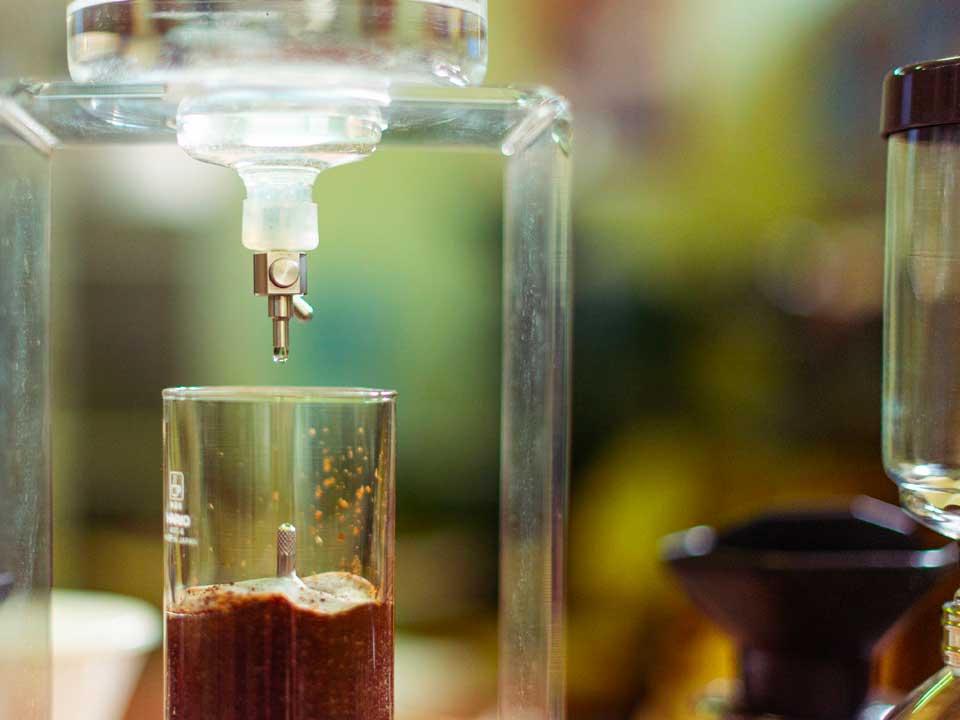
- Infusions: In this method, the coffee is “soaked” in water for a certain period of time.
- Percolations: In this method, water “percolates” or filters through the coffee, which is usually held by a filter made of paper, metal or even cloth..
In the first case, the contact time depends on how long you leave the coffee in the water before filtering it. In the second case, it depends on how long it takes for the water to pass through the coffee. As you will see later in the post, there are also hybrid methods that combine infusion and percolation.
It’s impossible to say that one method is better than the other. Even within these “macro methods,” you can vary many other parameters to find your perfect flavor profile.
One thing we can say for sure: if you want to prepare cold brew at home, you’ll quickly discover that infusion methods are the simplest and most economical. So, start experimenting with those.
Ok, let’s start exploring the list below for the simplest and most affordable ways to make cold brew at home:
1) How to prepare cold brew coffee with tools everybody has at home
On social media, you often see videos of people cooking outdoors in extreme weather conditions, using nothing but a knife and a campfire. Our first method for preparing cold brew at home follows a similar spirit.
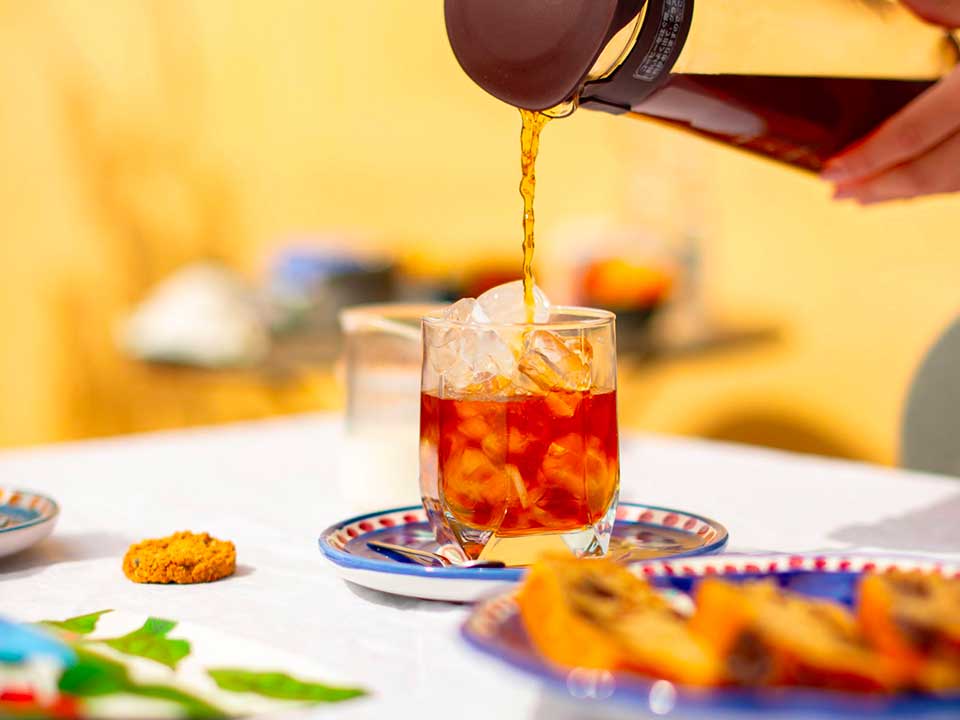
This method doesn’t require anything that isn’t normally found in an average household (although if you want to prepare your cold brew on the banks of the Klondike River, you might need to gather some supplies before you go!).
Let’s take a look.
Necessary Tools:
- Glass or plastic container, such as a jar or a plastic pitcher (avoid metal pots, which can sometimes release metallic and oxidized flavors)
- Filter (if you want a truly “post-apocalyptic” cold brew, even a paper towel will do)
- Coarsely ground coffee (ideally between 700 and 1000 microns, slightly coarser than for a moka pot, and lightly roasted like this one) https://caffelab.it/caffe-cold-brew/
- Cold water
Procedure:
- The golden rule of brewing is usually 200/250 grams of coffee per liter of water (from 7 to 8 Oz per 34 fluid Oz). With cold brew methods the trend is to increase the extraction, getting a higher strength for your infusion and then, eventually, dilute it. Even about this matter, feel free to experiment!
- Pour the ground coffee into the container and add cold water. Stir gently to ensure all the coffee is immersed.
- Cover the container and let it infuse in the refrigerator for 8-12 hours.
- Finally, use the filter or a paper towel to separate the liquid from the coffee grounds, transferring the liquid to a new container.
- This concentrated preparation can be stored in the fridge for a maximum of 7 days, then it will begin to decay from an aromatic point of view, taking on stale notes due to oxidation.
- Before serving, dilute the concentrated Cold Brew with 2 or 3 parts of another drink, water, milk, soy drink, tonic water, lemonade… in short, don’t set limits to your imagination!
2) How to prepare cold brew coffee with a french press
The method described above is quite “rusty.” Making it a bit more “refined” is easy with a French press, which you can buy whereever for less than €15…
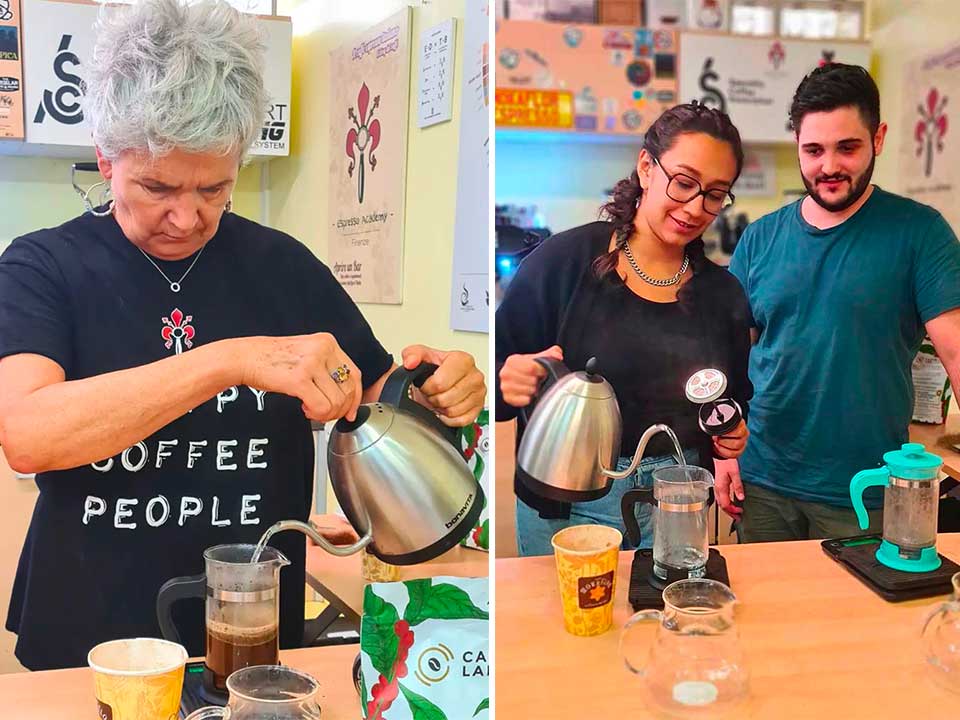
A French press allows you to perform the operations described above in a much less primitive, yet equally simple way. When you want to filter the liquid from the grounds, you just press the plunger to separate the coffee grounds from the liquid and pour the liquid into another container.
When deciding whether to use the primitive infusion method or the French press, consider an important variable:
With the first method, you’ll use a paper filter, which retains oils and many suspended particles, giving you a “cleaner” and less full-bodied taste. With the French press, which has a metal filter, many more solids and oils will pass through.
3) Preparing Cold Brew at Home with the Toddy
The third method we suggest is Toddy. It is a hybrid method, half infusion and half percolation, certainly more expensive than previous methods. This tool in fact is available for purchase on specialized sites as well as on Amazon, costing between €50 and €100.
As with many other tools used in the brewing world, the Toddy was invented much earlier than you might think. His official website traces the first inspiration back to 1963

How to Use It:
- Preparation: Place the ground coffee in the Toddy filter (even in tihis case 200/250 grams of coffee per liter of water -from 7 to 8 Oz per 34 fluid Oz- can be considered a correct starting point)
- Infusion: Add water evenly, ensuring the coffee is well-covered.
- Rest: Let it infuse at room temperature from 8 to 24 hours (feel free to experiment…).
- Filtration: Remove the bottom stopper and let the coffee concentrate filter out.
- Serving: Dilute the concentrate with water or milk to taste and enjoy it cold.
The Best Canned Cold Brew on the Market
Preparing a cold brew as good as Starbucks, or even better, at home is not a problem. It doesn’t require much space or large investments—just time.
However, time can be a drawback when making cold brew at home. As you’ve seen, it needs to infuse for several hours. Unless you’ve prepared it in advance, you can’t just walk in after a long, hot, stressful day and enjoy it—unless you have a can…
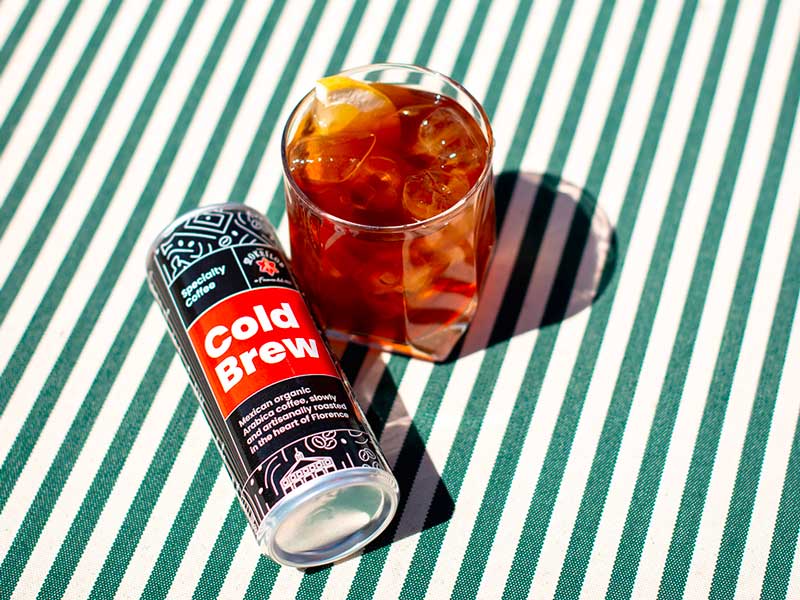
For some time now, canned cold brew, prepared with ideal parameters, fresh and ready to drink, has been available on the market. Our company, Mokaflor, in collaboration with the coffee tasters from Espresso Academy, has developed one. Made with organic specialty coffee from the Finca “La Concordia” in Mexico, you can find it here: https://caffelab.com/cold-brew-mokaflor/
Also, by purchasing canned cold brew, you can answer the question that has likely been nagging you since the beginning of this post: where to find coffee with the right grind size?
Which coffee is best for cold coffee?
If instead you prefer to prepare your own cold brew, the coffee needs to correspond to only one essential requirement: coffee coarsely grounded at around 800/1000 microns.
From here on, it becomes a matter of taste. Generally, in cold brew, we are not seeking the body or crema of espresso, and we certainly do not want a pronounced bitterness in the preparation. Instead, cold brew coffees aim for elegant flavors, aromas, and a pleasant acidity.
Therefore, for our cold brew, it’s preferable to use high-altitude Arabica coffees, often with a cupping score above 80 points (though not crucial, depending on your addiction level).
Since we avoid bitterness and favor fruity, floral, and enzymatic flavors, it’s also beneficial to use coffees roasted for filter methods, which are lighter compared to those roasted for espresso. For those interested in technical details, the ideal roast is typically around 68/75 Agtron degrees.
At the end we can answer the famous old questions related with many of our courses “Can I make cold brew with regular coffee?” just if your average coffee is a good blend, lightly roasted and coarsely grounded… Check out our roasting course!
The recipe of the Starbucks’s cold brew
To conclude and armed with what we’ve learned in this article, let’s explore the recipe from one of the groups that helped make cold brew famous worldwide: Starbucks.
The recipe featured on the website of the American giant can be found on this page: https://www.starbucksathome.com/za/brewing-guides/brewing-at-home/cold-brew
However, we can preview that it is prepared using a French press and with a coffee-to-water. Starbucks’ cold brew recipe recommends using 22 grams of coffee per 180ml water (0,77 Oz per 6 fluid Oz)
After extraction, it suggests mixing the “cold brew concentrate” with water, ice, and (as we suggest, Indian tonic water) to achieve the perfect dilution!
Conclusion
Well, now you know everything about how to prepare and enjoy cold brew coffee. Or rather, you know where to start, because, as you have surely understood, cold brew, like other filter preparations, is a starting point for experimenting, trying and tasting! And if you want to start experimenting, we’ll be waiting for you at the brewing classes!


